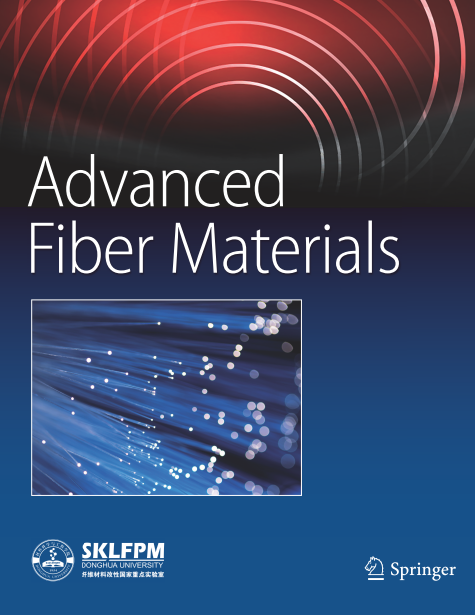An All-Nanofiber-Based Customizable Biomimetic Electronic Skin for Thermal-Moisture Management and Energy Conversion
Abstract
Developing electronic skin (e-skin) with extraordinary sensing capabilities through biomimetic strategies holds significant potential for distributed wearable electronics in the Internet of Things and human–machine interaction. However, moisture accumulation at the surface between e-skin and human skin severly affects the stability and accuracy of sensing signals. Thermal-moisture comfort and stable functional interfaces of e-skins are still great challenges that need to be addressed. Herein, inspired by the dual-sided structure of lotus leaf, we demonstrate an unidirectional water transport e-skin (UWTES) by constructing a gradient structure of porosity and hydrophilicity using one-step electrospinning thermoplastic polyurethane/poly (vinylidene fluoride-co-hexafluoropropylene) (TPU/PVDF-HFP) with an alloyed liquid metal-based (LM-Ag) electrode. A UWTES textile-based triboelectric nanogenerator (UT-TENG) exhibits a maximum open-circuit voltage, short-circuit current and power density of 188.7 V, 18.89 μA and 4.73 mW/m2, respectively. Additionally, a temperature visualization system for UWTES textile (TUWTES) enables real-time monitoring and displays of body temperature during intense physical activity. Through a one-dimensional convolutional neural network (1D-CNN), the gait motion recognition system achieves a highly accuracy of 99.7%. This design strategy provides new insights into the development of integrated smart textiles with improved thermal-moisture comfort and user-friendliness.
Graphical Abstract

 求助内容:
求助内容: 应助结果提醒方式:
应助结果提醒方式:


